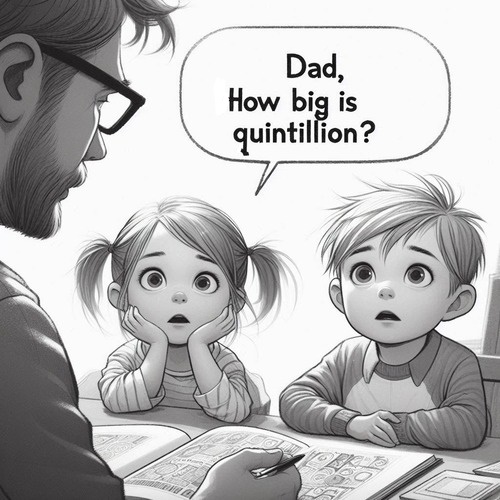Shiloh Unearthed: Where Archaeology Meets Scripture
For decades, archaeologists working in the hills of Samaria have been carefully uncovering the secrets of ancient Shiloh, one trowelful of soil at a time. What they’ve discovered has sent ripples through both academic and faith communities: tangible evidence that validates the biblical narrative of this once sacred site.
SHILOH’S BIBLICAL SIGNIFICANCE
The Bible introduces us to Shiloh as the religious and political centre of ancient Israel before Jerusalem rose to prominence. After the conquest of Canaan, the Book of Joshua tells us the Israelites established the Tabernacle—God’s portable sanctuary—at Shiloh (Joshua 18:1).
For over three centuries, Shiloh functioned as the spiritual heart of Israel. It was where Joshua divided the promised land among the tribes, where worshippers brought annual sacrifices, and where Samuel began his prophetic ministry. Perhaps most memorably, it was at Shiloh where Hannah prayed for a son, promising to dedicate him to God’s service—a son who’d become the prophet Samuel.
The Bible narrative suggests Shiloh’s prominence ended with a catastrophic destruction, likely after the Philistines captured the Ark of the Covenant in battle (1 Samuel 4). The prophet Jeremiah later referenced this destruction as a warning (Jeremiah 7:12).
THE ARCHAEOLOGICAL JOURNEY AT SHILOH
The modern site of Shiloh, known as Tel Shiloh or Khirbet Seilun, sits about 20 miles north of Jerusalem. Archaeological work here has spanned multiple decades and involved several international teams:
- Danish expeditions led by Hans Kjaer (1926-1932)
- Israeli excavations under Israel Finkelstein (1981-1984)
- Further Israeli work directed by Yisrael Shiloh (1984-1986)
- Ongoing excavations by the Associates for Biblical Research (ABR) since 2017
Each expedition has added pieces to the archaeological puzzle. But recent work by the ABR team, led by Dr Scott Stripling, has yielded particularly significant discoveries that align with biblical accounts.
EVIDENCE THAT VALIDATES SCRIPTURE
Settlement Patterns and Timeline
One of the most striking archaeological confirmations comes from the settlement patterns revealed at Shiloh. Excavations show clear evidence of Israelite occupation beginning in the late 13th to early 12th century BC—precisely when biblical chronology places Joshua and the Israelite settlement of Canaan.
Archaeologists have discovered collared-rim storage jars, four-room houses, and an absence of pig bones in the food remains—all distinctive markers of Israelite settlements during this period. These findings contradict earlier theories that denied Israelite presence in the central highlands during this era.
Even more compelling is evidence of destruction. Excavations have uncovered a destruction layer with burned stones, ash, and collapsed walls dating to approximately 1050 BC. This aligns remarkably well with the biblical timeline of Shiloh’s fall after the battle of Ebenezer against the Philistines. Dr Stripling notes: “The dating of this destruction layer corresponds precisely with the biblical chronology. The material culture we’re finding—pottery, weapons, and burned debris—tells the story of a violent end to Shiloh, just as Scripture suggests.”
The Tabernacle Location
Exciting research involves the possible identification of the Tabernacle site. Excavations have revealed a large, level area measuring approximately 400 by 250 feet with retaining walls—dimensions that could accommodate the biblical Tabernacle complex.
Archaeologists have discovered stone installations that may have anchored the Tabernacle’s curtains, as well as evidence of heavy pedestrian traffic consistent with a major worship site. Particularly telling are bone deposits showing signs of ritual slaughter according to biblical law, with cut marks in precisely the locations prescribed for sacrificial animals.
Daily Life in Biblical Shiloh
Beyond the major historical events, archaeology provides fascinating glimpses into everyday life that validate biblical descriptions:
- Material Culture: Excavations have yielded pottery, tools, and household items that paint a picture of life in ancient Shiloh consistent with biblical accounts. Simple clay vessels, stone grinding tools, and modest dwellings reflect the agrarian society described in Judges and 1 Samuel.
- Economic Activities: Agricultural installations such as olive presses, grain storage facilities, and wine production areas demonstrate the economic activities mentioned in biblical texts. These findings confirm Scripture’s portrayal of an agricultural society where families would bring “the firstfruits of your grain, new wine and olive oil” (Deuteronomy 18:4) as offerings.
- Evidence of Worship: Ritual objects discovered at Shiloh include stone altars, ceremonial vessels, and remains of animals commonly used in biblical sacrifices (sheep, goats, and cattle). Particularly noteworthy is a ceramic pomegranate, reminiscent of the decorative pomegranates described on priestly garments in Exodus.
Dr Bryant Wood of ABR explains: “What we’re seeing at Shiloh is a perfect match between the material culture we’re excavating and what the Bible describes. From the domestic spaces to the ritual areas, the archaeological evidence consistently aligns with biblical descriptions.”
Dr Stripling reflects: “Every season at Shiloh brings new discoveries that help us understand the biblical world better. We’re not just finding artefacts; we’re uncovering the context of faith, the setting of stories that have shaped world civilization.”
CONCLUSION: SHILOH UNEARTHED
While archaeology cannot prove every detail of Scripture, the excavations at Shiloh demonstrate remarkable correlation between Bible accounts and physical evidence. As trowels continue to unearth Shiloh’s secrets, each discovery bridges the gap between text and terrain, between faith and history. The Bible narrative no longer stands alone—it now has archaeological companions that speak from the ground, telling a story of a people, their faith, and a sacred place called Shiloh.
The words of the prophet Jeremiah, spoken over 2,600 years ago, invited people to “go to Shiloh and see.” Today’s archaeological work allows us to do just that, revealing a picture that increasingly validates the biblical portrait of this ancient sacred centre.
SHILOH UNEARTHED: RELATED FAQs
Were any personal items or inscriptions found that might connect to biblical figures like Samuel or Eli? While no direct inscriptions naming Samuel or Eli have been discovered, archaeologists have found personal seals and inscribed pottery from the correct time period. These items demonstrate literacy among Shiloh’s inhabitants and occasionally include names mentioned elsewhere in Scripture, though not yet these specific biblical figures.
- How do archaeologists distinguish between Canaanite and Israelite settlements at Shiloh? Archaeological distinction comes through pottery styles, architectural patterns (particularly the four-room house), and evidence of dietary practices. The absence of pig bones in Israelite layers (consistent with kosher practices) compared to their presence in earlier Canaanite strata provides particularly compelling evidence of this cultural-religious transition.
- What evidence exists for the Philistine destruction of Shiloh mentioned in the Bible? Excavations have revealed a significant ash layer with collapsed mudbrick structures dating to approximately 1050 BCE, precisely when Scripture indicates Shiloh fell. Archaeologists have uncovered Philistine pottery shards, arrowheads, and sling stones embedded within this destruction layer, strongly suggesting a violent military conquest rather than abandonment or natural disaster.
Have archaeologists found any evidence of the Ark of the Covenant at Shiloh? No direct evidence of the Ark itself has been discovered, which aligns with the biblical account that it was captured by the Philistines before Shiloh’s destruction. However, the carefully prepared platform and architectural elements suggest the presence of a significant religious structure that could have housed such an important artefact.
- How does Shiloh’s archaeological record compare to other biblical sites? Shiloh presents one of the clearer archaeological correlations with biblical text compared to many other sites, with chronology, destruction patterns, and material culture aligning remarkably well with Scripture. Sites like Jerusalem, Hazor, and Lachish also show strong archaeological correlation, while other locations mentioned in the Bible have yielded more limited or ambiguous findings.
- What technologies do archaeologists use at Shiloh now that weren’t available in earlier excavations? Modern excavations at Shiloh employ wet sifting (which catches smaller artefacts), LiDAR scanning (creating detailed topographical maps), drone photography (revealing patterns invisible from ground level), and scientific analysis techniques like radiocarbon dating, residue analysis, and DNA testing. These technologies allow for more precise dating and identification of organic materials that earlier excavations could not detect.
How have political tensions in the region affected archaeological work at Shiloh? Archaeological work at Shiloh has occasionally been complicated by its location in the West Bank, with excavation permits, access, and interpretation sometimes influenced by regional politics. Despite these challenges, international teams have generally been able to conduct scientific excavations, though the presentation and interpretation of findings can become points of contention in the broader Israeli-Palestinian context.
SHILOH UNEARTHED: OUR RELATED POSTS
- Hezekiah’s Reforms: Lachish Discoveries Confirm Bible Account
- Bible Accounts of Ancient Trade: Archaeological Evidence
- Historical Reliability of the Bible: Astonishing Archaeological Finds
- Archaeological Finds Validate Bible: Unearthing Biblical Truth
- Archaeology Endorses Scripture: Papyri and Dead Sea Scrolls
- Historical Accuracy of the Book of Acts: A Treasure Trove of Evidence
Editor’s Pick

How Many Times Did the Rooster Crow at Peter’s Denial?
THE CHALLENGE When sceptics want to undermine Scripture’s reliability, they often point to Peter’s denial as Exhibit A for supposed [...]

Biblical and Systematic Theology: Why Do We Need Both?
TWO LENSES, ONE TRUTH Picture this familiar scene: A seminary student sits in the library, torn between two stacks of [...]

The Mysterious Two: Who Are the Anointed Ones in Zechariah?
Picture this: a golden lampstand blazing with light, flanked by two olive trees that pour oil directly into the lamp’s [...]

Regeneration Or Faith? Which Comes First in Salvation?
In the moment of salvation, does God regenerate our hearts first, or do we believe first? How we answer this [...]

Interracial Marriages: Does God Frown On Them?
The question hits close to home for many Christian couples and families today. As our churches become increasingly diverse, believers [...]
‘Because Angels Are Watching’: What Does 1 Corinthians 11:10 Mean?
“For this reason the woman ought to have authority on her head, because of the angels” (1 Corinthians 11:10, ESV). [...]

Why Does God Torment Saul With An Evil Spirit?
Would a holy God send an evil spirit to torment someone? This theological puzzle confronts us in the biblical account [...]

Paul’s Teaching on Women’s Roles: 1 Timothy 2:12 Explained
YARBROUGH’S BIBLICAL CASE FOR COMPLEMENTARIANISM In a world of shifting cultural values, few biblical texts generate as much discussion as [...]

What Does the Bible Really Mean By ‘The Flesh’?
8The phrase "the flesh" appears over 150 times in the New Testament, making it one of the most significant theological [...]

Does God Still Talk Directly To His People?
"God told me to take this job." "I feel the Lord leading me to marry her." Such phrases echo through [...]






